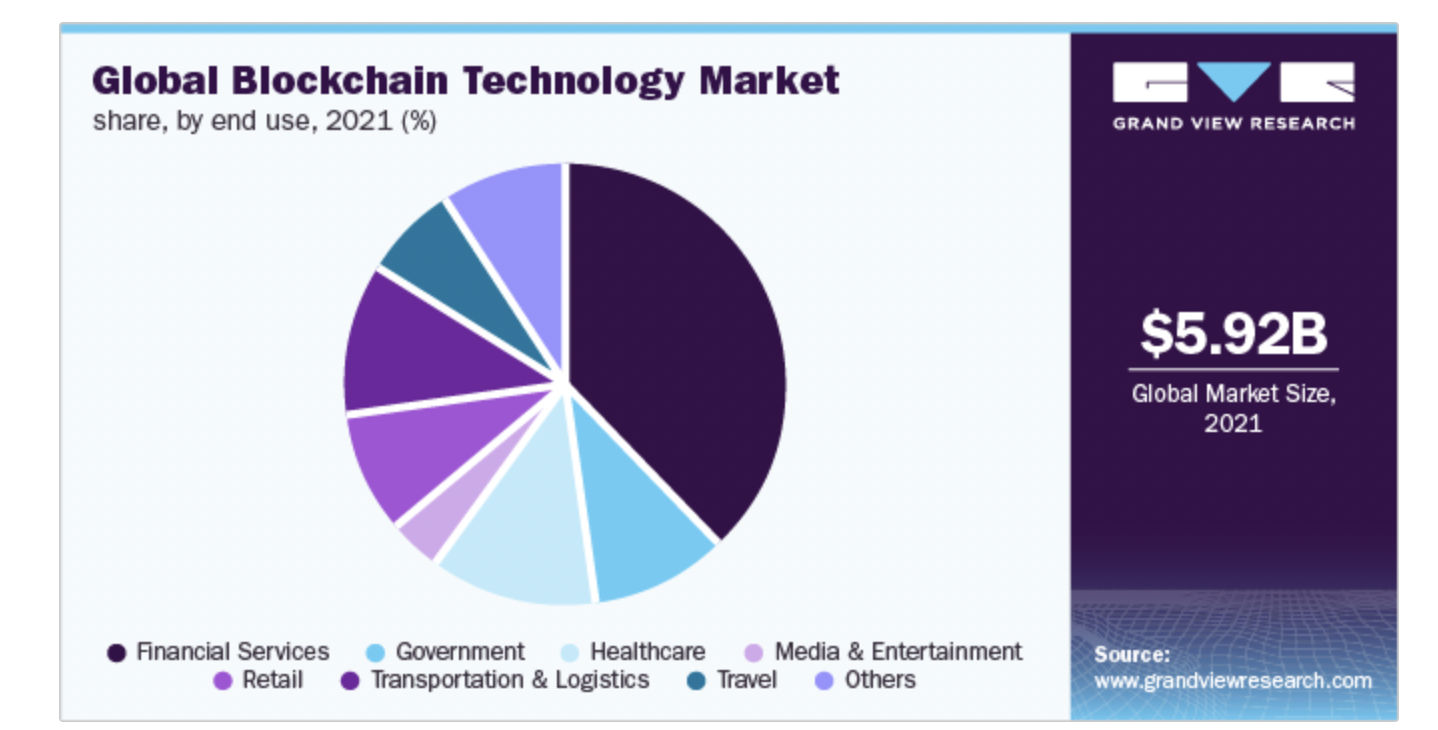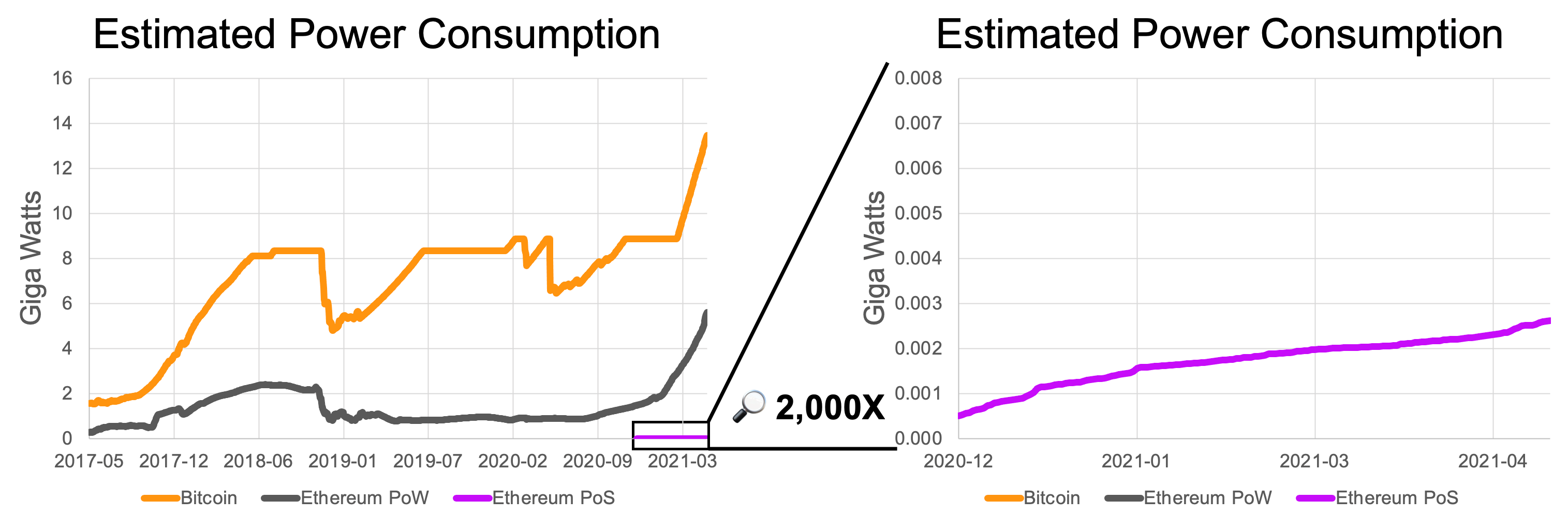Most people familiar with blockchain learned about it as the ledger system for cryptocurrency and decentralized finance (DeFi). In 2021, environmental advocates raised questions about blockchain sustainability, largely centered around Bitcoin and Ethereum mining.
With this year’s ongoing drama in the cryptocurrency markets, business executives should know that grthe owing demand for blockchain is rapidly extending beyond DeFi. This post provides some helpful background on blockchain sustainability to provide context for executives considering implementing an enterprise blockchain solution. Let's take a look.
With this year’s ongoing drama in the cryptocurrency markets, business executives should know that grthe owing demand for blockchain is rapidly extending beyond DeFi. Share on XThe Data Big Bang: How We Got Here
From the ancient trading economies of the past to today, businesses have relied on data to chart strategy and review performance. Prior to modern technology, human productivity set the upper limits for data collection and production.
With the introduction of business computing in the pre-internet era, data output began to scale beyond hand-written ledgers. At first, businesses hosted databases on owned servers located on-site in server closets or buildings, depending on the company size.
When the internet introduced connectivity at scale, data production and demand for data management increased. Cloud storage now enables companies to store more data in the “cloud”; external servers are located in remote server farms owned by cloud service providers.
In the Internet of Things (IoT), the “things” are increasing rapidly, with millions of devices sending data to the cloud. Big Data has arrived with a big bang.
The latest revolution for data is blockchain. Blockchain technology provides a new way of storing data and managing transactions. While blockchain will not necessarily replace all traditional databases, it does solve some of their shortcomings in many use cases.

While financial services still represent 38% of the usage share of the global blockchain technology market, blockchain is present and growing in all the main sectors of society, such as government, healthcare, retail, supply chain, media, oil and gas, Telecomm, travel, and insurance.
What is the Big Deal with Blockchain?
As you might imagine, blockchain innovations include more complexity than we cover in this post. The key to remember is that blockchain technology introduces two main innovations: trust and cost savings via efficiency and automation.
Trust: Blockchain transactions are secure and traceable.
- It is difficult, if not impossible, for unauthorized users to access the entire blockchain or tamper with past transactions.
- Authorized users of the blockchain can trace any transaction at any time. One popular use case is for the supply chain, for example. Different stakeholders can trace where materials or products are in the supply chain at any time.
Cost savings: Blockchain reduces inefficiencies and overhead.
- Blockchain can automate transactions to eliminate inefficient paperwork.
- Automated transactions reduce the need for intermediaries and third-party transactions.
Like most things that sound too good to be true, there is a catch.
Blockchain Sustainability
In the last couple of years, climate advocates raised questions about the energy consumption associated with blockchain technology. When looking at the energy consumption as a potential blockchain downside, it's helpful to take a closer look.
Much of the controversy is related to Bitcoin and Ethereum mining production. Bitcoin’s inventor (or inventors - we still don’t know precisely who Satoshi Nakamoto is) created the first blockchain as a ledger for Bitcoin. Other cryptocurrency creators followed suit, including Vitalik Buterin, the (not so mysterious) founder of Ethereum.
Initially, both coins used an energy-intensive process, or consensus protocol, called proof-of-work. As demand for Bitcoin persists despite volatility in the market, the jury is still out on whether or not the energy requirements of Bitcoin outweigh its potential advantages.
Regardless, it is clear that proof-of-work was not a realistic solution for scaling blockchain use cases apart from cryptocurrency, especially for public blockchains.
The Ethereum blockchain hosted most of the cryptocurrency-based commerce growth. In 2020, when observers saw the rapid exponential growth in areas like NFT marketplaces, they raised concerns about the potential environmental impact due to increased demand for Ethereum cryptocurrency.
In the meantime, developers were launching blockchains that used more energy-efficient consensus protocols. The most common one is called proof-of-stake.
In September of 2022, Ethereum successfully implemented a long-awaited switch to proof-of-stake, taking the power consumption of the Ethereum blockchain down to a fraction of its former usage.

As of today, the relatively energy-intensive blockchains are Bitcoin and a few others that still use the proof-of-work mechanism. However, that doesn’t mean that proof–of-stake is the go-to secret sauce for enterprise blockchain.
The reason is that most businesses do not need or want to build their business solution on a public blockchain. As IBM Distinguished Engineer Christopher Ferris wrote:
Just consider the financial services sector where institutions need to follow rigorous know-your-customer and anti-money laundering regulations. A Chief Information Security Officer would run screaming at the idea of accepting transactions from anonymous accounts or allowing anyone to run smart contracts on that type of network.
(source)
With a private blockchain, a pre-existing business relationship implies mutual trust. For that reason, the consensus protocol doesn’t need to be as stringent for private enterprise blockchains.
The blockchain admin controls who accesses the blockchain and runs smart contracts. Private blockchains can and do set up their own governance framework and legal remedies for bad behavior.
While the cost of blockchain is higher than a traditional database system, for many companies, the overall business outcome improvements outweigh the increased overhead.
Moving Ahead
As you can see, the remaining concerns around blockchain sustainability are generally limited to Bitcoin and, to a lesser degree, public blockchain protocols. If your business is considering a private blockchain-based solution, one big question is will the increased cost outweighs the benefits. Our team can talk you through the pros and cons specific to your business. Feel free to reach out to us for a consultation.
2022 Top 10 Blockchain Providers for Enterprise Solutions
- IBM Blockchain Solution - a straightforward interface for establishing and administrating a blockchain network. Runs on Hyperledger Fabric.
- Ethereum Mainnet for Enterprise - private blockchain carve-out for enterprise, built on Ethereum.
- Hyperledger Fabric - an open-source, industry-agnostic blockchain initiative announced in 2016 by the Linux Foundation.
- R3 Corda - a collaboration of some of the world's largest financial institutions that have developed an open-source distributed ledger technology.
- Ripple - through RippleNet, financial institutions, payment processors, digital asset exchanges, and corporations can conduct almost free, chargeback-free international transactions with one another.
- Quorum - A JP Morgan-backed solution built on Ethereum.
- XDC network - Singapore-based non-profit using XDPoS protocol.
- Hedera Hashgraph - a blockchain alternative using a hashgraph consensus protocol, currently only available for private, permission-based networks.
- Kaleido - a marketplace for enterprise blockchain products from different chains.
- Tezos - leverages the Michelson programming language, which some experts believe is best suited for mission-critical programs.



